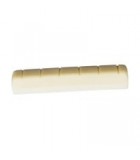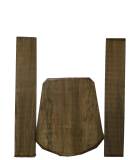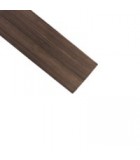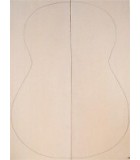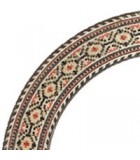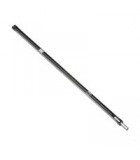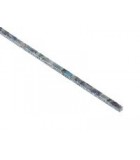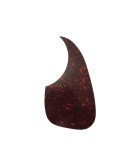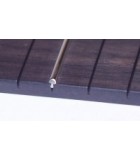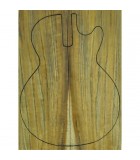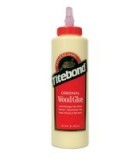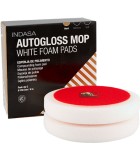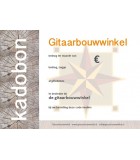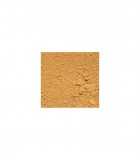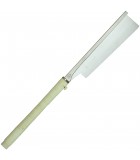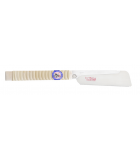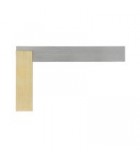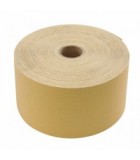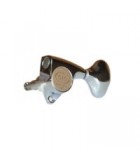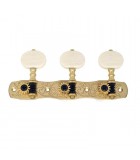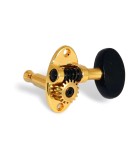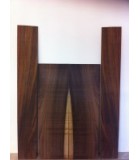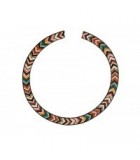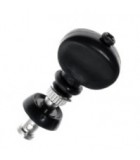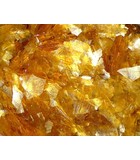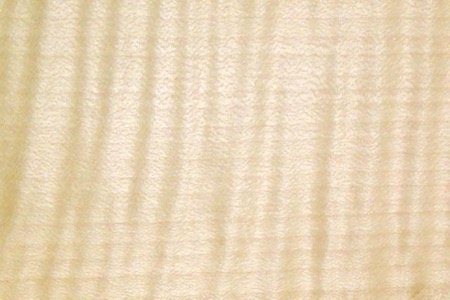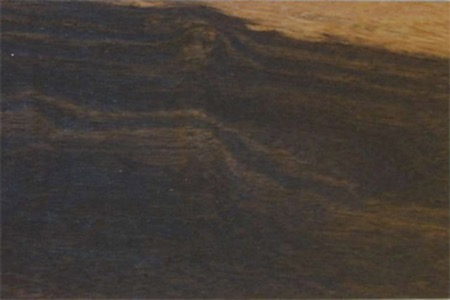Description of various types of wood
Western Red Ceder
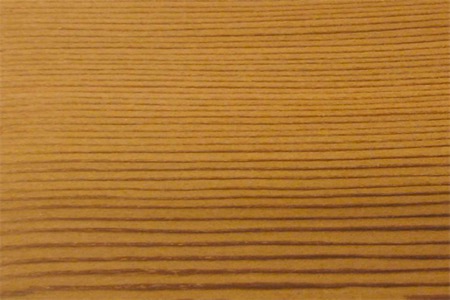
Despite not being a traditional wood for a soundboard, Red Cedar (Thuja plicata) is extremely popular among guitar builders, and many classical guitars are made from this wood species. Red Cedar is found on the west coast of America, from Alaska to Washington, Oregon, and British Columbia. Cedar is softer and not as strong or elastic as spruce wood, but it is much more stable. The colors range from light brown-red to a chocolate brown hue.
Engelmann spruce
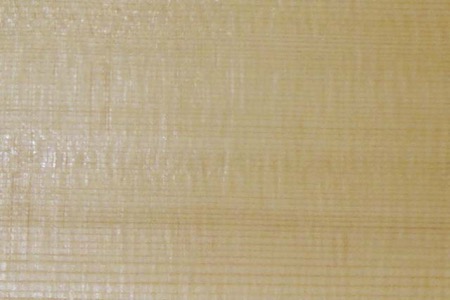
The wood species "Engelmann spruce" (Picea engelmannii). Engelmann spruces belong to the spruce family and are found in the Rocky Mountains, New Mexico, Idaho, and Montana, as you mentioned. This wood species is known for its lightness and bright color, making it suitable for various applications. Engelmann spruce is often used as a soundboard in musical instruments, particularly in acoustic guitars. The wood has good resonance properties, making it a popular material for guitar builders. The lightness of the wood contributes to better sound projection and responsiveness. In addition to musical instruments, Engelmann spruce is also used for internal parts of furniture, veneer, plywood, and carpentry where lightness and durability are desired. It can be used for various applications depending on the specific quality of the wood. One reason why Engelmann spruce may be cheaper than German spruce (Picea abies) is that German spruce has become scarcer due to pests, diseases, and logging. This has led to higher prices for German spruce wood, while Engelmann spruce wood remains a more affordable alternative. However, it is important to note that wood prices can vary based on various factors, including availability, demand, and quality.
European spruce, German spruce

European spruce (also known as German spruce) has always been a traditional choice for manufacturing soundboards for guitars and other musical instruments. This wood has a beautiful ivory color that is highly appreciated. Unfortunately, European spruce is currently in a concerning endangered state. The quality of this wood depends on various factors, including density, grain uniformity, quarter sawing, and color. When making soundboards, it is important to select wood that possesses these qualities. The imminent extinction of European spruce/German spruce is a worrying development. It is important to promote sustainable forest management and consider alternative wood species, such as the previously mentioned Engelmann spruce, to ensure the survival of high-quality wood for musical instruments.
African mahogany
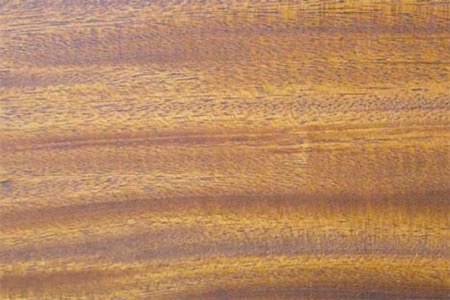
Samanguila, also known as Acajou, is one of the five wood species belonging to African Mahogany (Khaya ivorensis). It has a light pink color that darkens to a reddish-brown hue when exposed to light. This wood is often used for the neck and heel block of guitars. The use of Samanguila/Acajou for guitar construction is popular due to the wood's aesthetic properties and functionality. It offers a good combination of stability, strength, and resonance, making it suitable for use in these critical parts of a guitar. African Mahogany, to which Samanguila/Acajou belongs, is a valuable wood species due to its durability and attractive appearance. It is also used in other applications such as furniture, veneer, and decorative woodworking. However, it is important to ensure that the wood comes from sustainably managed forests and that the protection of species and their habitats is considered to ensure its use is done responsibly and in an environmentally friendly manner.
Ovangkol
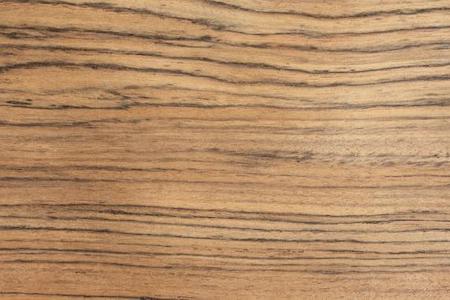
Ovangkol (Guibourtia spp., usually Guibourtia ehie) is indeed a wood species with yellow-brown to chocolate-brown heartwood, characterized by gray-black streaks. It is a heavy wood with moderate hardness, but it has high stiffness, strength, and shock resistance. Ovangkol is often used for the back and sides of a guitar. Using Ovangkol for the back and sides of a guitar contributes to the overall sound quality and resonance of the instrument. The density and stiffness of the wood contribute to a balanced tone and projection, while the strength and shock resistance help make the wood durable and resistant to damage. In addition to its acoustic properties, Ovangkol also has an attractive appearance, with its varied color shades and striking stripes. This contributes to the aesthetics of a guitar and can enhance its visual appeal. It is important to note that Ovangkol is sourced from tropical regions, such as West Africa. When using wood, it is always recommended to ensure it comes from sustainably managed sources to ensure the protection of forests and ecosystems.
Indian Rosewood
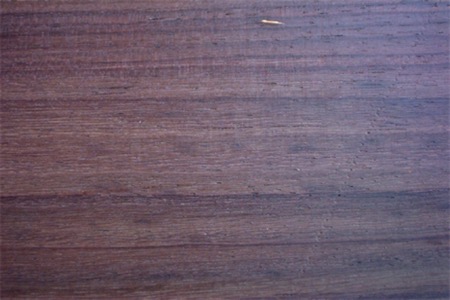
Indian Rosewood, also known as Dalbergia latifolia, is indeed often used as an alternative to Brazilian rosewood. It is lighter and less dense than Brazilian rosewood but offers more stability. The wood varies in color from red to light brown with golden streaks. Often, the colors exhibit various shades of purple that oxidize over time and turn into a brown color. The quality of Indian Rosewood depends on several factors, including fiber restriction, color, and uniformity. When selecting this wood, attention is paid to fiber density as it can affect the resonance and sound quality of the instrument. Uniformity in color and pattern contributes to the aesthetic appeal of the wood. Indian Rosewood is widely used for the sides, back, bridges, and headplates of musical instruments. The wood provides durability, an attractive appearance, and good sound qualities. It is important to mention that the use of Indian Rosewood may also be subject to regulations and restrictions due to protective measures for endangered wood species.
Cocobolo, Mexican Rosewood
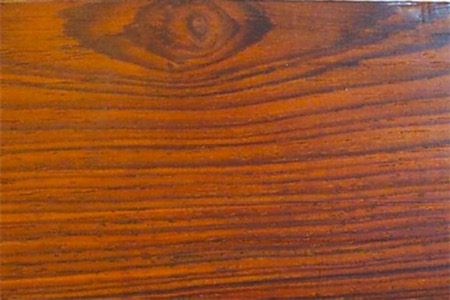
Cocobolo, also known as Dalbergia retusa, is indeed a very heavy and strong wood with elastic properties and stability during use. It is an exotic wood species with rich color. Cocobolo is harvested from South Mexico and Central America. The wood of cocobolo is known for its striking colors, ranging from red to orange-brown with dark veins and sometimes even purple hues. It has a natural luster and can become even deeper and richer over time. Cocobolo is often used for the back and sides of guitars due to its aesthetic appeal and tonal qualities. The dense and strong character of cocobolo contributes to a clear, balanced tone with good projection. The wood also has excellent resonance and can contribute to a rich and expressive sound. Due to the popularity and limited availability of cocobolo, it is important to ensure it comes from sustainably managed sources to protect this valuable wood species and preserve ecosystems.
Kingwood
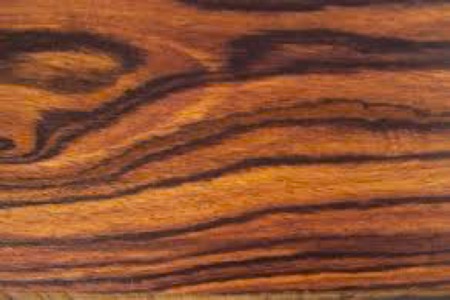
Kingwood, known by the botanical name Dalbergia cearensis, is indeed sourced from South America. The heartwood of Kingwood exhibits variegated colors with a rich background of violet-brown, almost black, with stripes of violet-brown, sometimes with golden-yellow hues. These characteristics make the wood visually striking and unique. Kingwood is often used for the sides and back of guitars. The wood not only offers an aesthetically appealing appearance but also has positive acoustic properties. The density and strength of Kingwood contribute to a clear tone with good projection and sustain. It is important to emphasize that Kingwood, like other exotic wood species, may face limited availability and sustainability issues. It is essential to ensure that Kingwood comes from legal sources and sustainably managed.
Tropical walnut
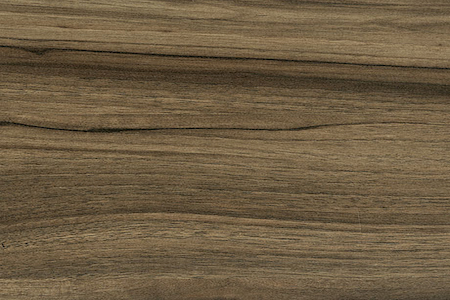
Tropical walnut wood, known by the botanical name Fallax Juglans, does indeed originate from Southeast Asia. The wood has a chocolate brown color with a hint of purple. The texture of tropical walnut wood is quite coarse, and its fiber structure resembles that of Indian rosewood. One of the advantages of tropical walnut wood is that it is easy to work with and provides an excellent finish. This makes the wood beloved by craftsmen and woodworkers. It can be easily shaped, carved, and polished to meet specific design requirements. The natural beauty and unique color variation of tropical walnut wood also make it attractive for decorative applications. The wood can be used in furniture, interior finishes, and other woodworking projects where a warm, rich look is desired. When using tropical walnut wood, it is important to ensure that it comes from legal sources and follows sustainable forest management practices to minimize environmental impact and ensure the future availability of the wood.
European maple
European maple, also known as Acer pseudoplatanus, is known for its hardness and reflective properties, which result in a loud and powerful sound. European maple is a hardwood with high density. It has a fine structure that provides high resistance. The acoustic properties of Acer pseudoplatanus make it highly sought after in the musical instrument industry, particularly for the production of string instruments such as violins, violas, and cellos. The wood is often used for the tops, backs, and sides of these instruments due to the unique sound quality it can provide. The hardness and density of Acer pseudoplatanus contribute to a clear, balanced tone with good projection. The wood has the ability to reflect and amplify sound, making it an excellent choice for instruments that require a powerful sound. It is worth noting that the quality and sound of the wood also depend on other factors such as wood selection, craftsmanship, and overall instrument construction.
Koa
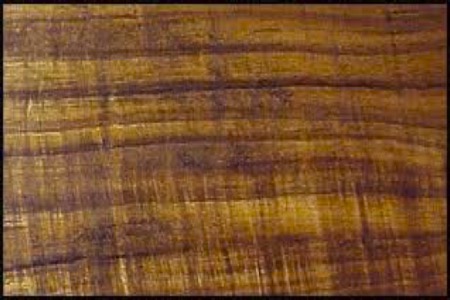
Hawaiian Koa, also known as Acacia koa from the Fabaceae family, is a rare and exceptionally beautiful wood. It is traditionally used for building ukuleles and for the back and sides of acoustic guitars. Hawaiian Koa is known for its striking colors, ranging from deep chocolate brown to gold, with various attractive patterns. The wood has a natural luster and a unique appearance that contributes to its aesthetic beauty. In addition to its visual appeal, Hawaiian Koa also possesses positive acoustic properties. The wood offers a warm, bright tone with excellent projection. It also has good sustain, allowing notes to resonate for longer. Due to the limited availability and valuable properties of Hawaiian Koa, it is important to ensure that it comes from sustainably managed sources. Responsible use of this special wood can help protect the species and preserve its unique ecosystems.
Padouk
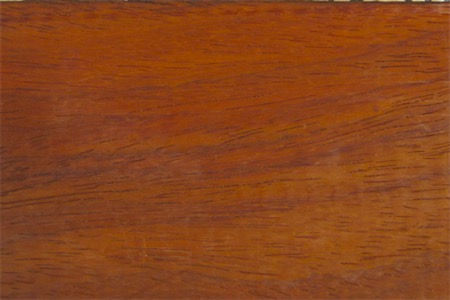
Padauk, also known as Pterocarpus species, has a distinctive orange/red color with fine dark brown streaks, especially when freshly cut. After oxidation, the color changes to a deep orange and tends towards brown. This wood is lighter in weight than Indian rosewood and is known for its stability, tone, and ease of use. Because of these characteristics, Padauk is often used for the back and sides of guitars. Padauk offers a pleasant sound with good resonance and projection. The wood has a natural warmth and brightness, making it a beloved choice for guitar makers. Additionally, Padauk is relatively easy to work with, making it suitable for various construction techniques and finishes. It is important to mention that when working with Padauk, as with other exotic wood species, sustainability issues and the origin of the wood should be considered. It is crucial to ensure that the wood comes from legal sources and is produced following sustainable forest management practices to support environmental protection and the preservation of valuable forests.
Madagascar Rosewood, Madagascar palisander
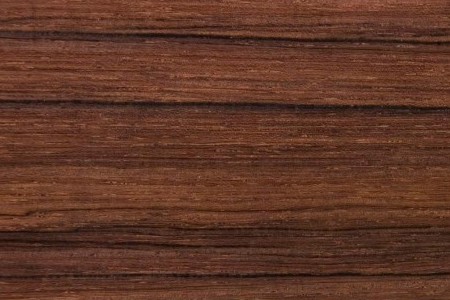
The color variation of Madagascar Rosewood, also known as Dalbergia baronii, can be quite large, ranging from shades of violet, orange, brown to deep chocolate. It can darken during the drying process or finishing of the wood. The characteristic black stripes, often resembling a spiderweb pattern, are always found on the outer side of the tree trunk. To preserve as much of these unique patterns as possible, the back of Madagascar Rosewood is usually flat sawn. However, the sides can be quarter-sawn, but they will have fewer markings as they are cut from the center of the tree trunk. A notable feature of Madagascar Rosewood is that no two guitars will be the same. Each set of wood is unique, accentuating its beauty. This contributes to the individual and exclusive appearance of each instrument made from this wood. It is important to emphasize that Madagascar Rosewood is a protected species, and there are strict rules and regulations regarding its trade and use. It is crucial to ensure that the wood used comes from legal sources and is produced following sustainable forest management practices to ensure the protection of the species and the preservation of natural habitats.
Santos Rosewood
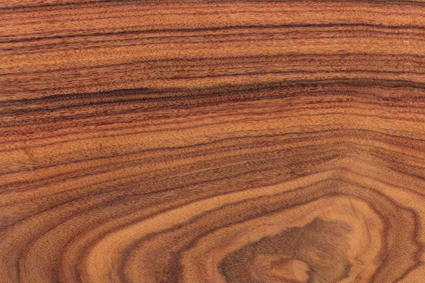
Santos Rosewood, also known as Machaerium spp., exhibits a distinctive and highly veined pattern, similar to other rosewood species. However, the wood has a slightly lighter color and is less red than other types. Sometimes it can even be considered almost light brown. Important warning: It is important to note that wood dust is never healthy to breathe in, but the dust from Santos Rosewood is known to cause allergic reactions. It can lead to skin problems such as rashes, respiratory irritations, swollen eyes, and a general flu-like feeling. Some individuals have even sought medical assistance for these symptoms. Therefore, it is crucial to take precautions when working with this wood and minimize exposure to the dust as much as possible. A warning is warranted. When working with Santos Palisander, it is highly recommended to take protective measures such as wearing a suitable respiratory mask, safety goggles, and gloves. It is also advisable to properly ventilate the workspace and carefully dispose of the dust to minimize exposure. It is important to be aware of the potential health risks and handle safety responsibly when working with Santos Palisander or any other wood known to cause allergic reactions.
Bubinga
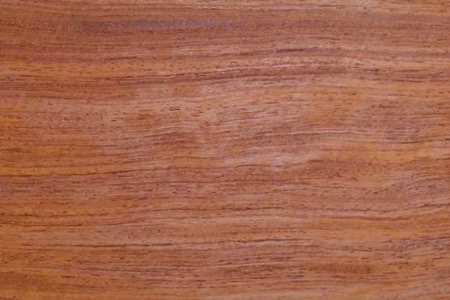
Bubinga, also known as Guibourtia spp., is a wood species widely used by harp builders, bass guitar builders, and other musical instrument makers due to the soft and well-rounded sound it produces. The wood is also popular for use in drum shells. Bubinga wood possesses excellent resonant properties and offers a warm, deep tone with good projection. It has a fine texture and a smooth surface, making it easy to work with and achieve a beautiful finish. Due to the acoustic qualities and aesthetic appeal of Bubinga, it is often chosen by instrument builders aiming for balanced tone and rich sound reproduction. Additionally, the wood is popular for its natural color variation, ranging from reddish-brown to purple-brown, providing a visually appealing appearance to the instruments. However, the use of Bubinga in musical instrument construction requires attention to sustainability issues. It is important to ensure that the wood comes from legal sources and is produced following sustainable forest management practices to ensure environmental protection and the preservation of valuable forests.
Pao Ferro, Amazon Rosewood
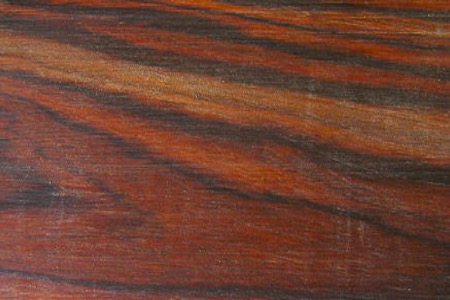
Pao Ferro, also known as Caesalpinia ferrea, is a wood species found in Brazil. The heartwood has a reddish-brown color. With a density of approximately 1010 kg/m3 at a moisture content of 12%, it belongs to the heavier wood species (heavier than, for example, Indian rosewood). Pao Ferro is known for its high strength and durability. The wood shows minimal distortion during seasonal changes, indicating its stability. Additionally, it has a porous structure, making it easy to work with. The wood responds well to cutting, planing, sanding, and polishing, making it suitable for various applications. The use of Pao Ferro varies, but it is often appreciated in the manufacturing of musical instruments, furniture, flooring, and other wooden objects. Its unique appearance and durable properties make it a sought-after choice for those seeking a strong and aesthetically appealing wood species. It is important to note that Pao Ferro, like any wood species, should originate from legal sources and be produced following sustainable forest management practices to ensure environmental protection and forest conservation.
Silver Oak
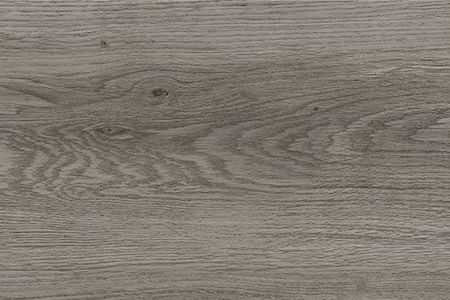
Silver Oak, also known as White Oak (Quercus alba), is a wood species with a light brown color and fine grain. It does indeed bear some resemblance to Maple. Guitar builders often use Silver Oak for the back and sides of classical and acoustic guitars, as well as for the body of electric guitars. The wood offers beautiful aesthetics and can provide good sound quality to the instrument. Silver Oak is known for its durability, strength, and stability. It is a hardwood that is resistant to wear and various weather conditions. This makes it suitable for constructing musical instruments that need to withstand frequent use and changes in humidity and temperature. The wood is also relatively easy to work with, allowing guitar builders to shape and finish it according to their preferences. It can be sanded, cut, and polished to achieve the desired shape and finish. As with any wood species, it is important to ensure that Silver Oak comes from legal sources and is produced using sustainable forest management practices to ensure environmental protection and forest conservation.
Cypress, Cipres
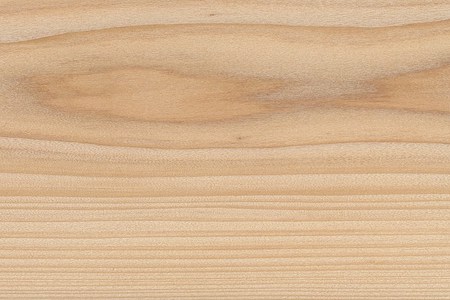
Cypress, also known as Cupressus sempervirens, is a wood species native to the Mediterranean region. It is commonly used for the back and sides of Flamenco guitars. Cypress has a natural color and a characteristic aroma, making it a beloved wood in guitar making. The wood is known for its durability, making it resistant to wear and long-lasting. This is especially important for Flamenco guitars, which are often played intensively. Additionally, Cypress is easy to work with, allowing guitar builders to shape and finish the wood according to their preferences. It can be easily sanded, cut, and polished, contributing to the creation of a high-quality instrument. However, the use of Cypress is primarily limited to Flamenco guitars. The tonal qualities and resonance of the wood are often considered ideal for the specific sound associated with Flamenco music. As a result, Cypress is less commonly used for other types of guitars. It is always important to ensure that the wood used comes from legal sources and is produced following sustainable forest management practices to ensure environmental protection and forest conservation.
Imbuia

Imbuia (Ocotea porosa) is a wood species with color variations from olive green to chocolate brown and a beautiful grain pattern. The wood is highly sought after for its aesthetic properties. When freshly cut, Imbuia has a pleasant spicy aroma, although this scent may fade over time. Imbuia is moderately hard and heavy, contributing to its durability and stability. However, the wood is still relatively easy to work with, making it suitable for various applications. It can be easily cut, sanded, and glued, making it convenient for both craftsmen and furniture makers. Due to its attractive color and striking pattern, Imbuia is often used in the production of furniture, veneer, turned woodwork, and decorative objects. It creates a warm and luxurious look in interiors. It is important to ensure that the used Imbuia wood comes from legal sources and is produced following sustainable forest management to guarantee environmental protection and forest conservation.
Ebony
Ebony, originating from Africa, is a very dark wood with an almost black color. It has a narrow, straight dark brown grain without knots. The texture of the wood is predominantly fine but simultaneously durable and resistant to wear. Due to these properties, ebony is often used for making guitar fretboards, where the guitar strings are placed. In addition to fretboards, ebony is also used for other parts of a guitar, such as the bridge and headplate. The use of ebony for these components contributes to both the aesthetic appearance and durability of the instrument. The dark and elegant appearance of ebony provides a luxurious look to guitars and is often appreciated by both guitarists and instrument makers. It is important to ensure that the used ebony comes from legal sources and is obtained through sustainable and responsible forestry practices to guarantee environmental protection and forest conservation.


